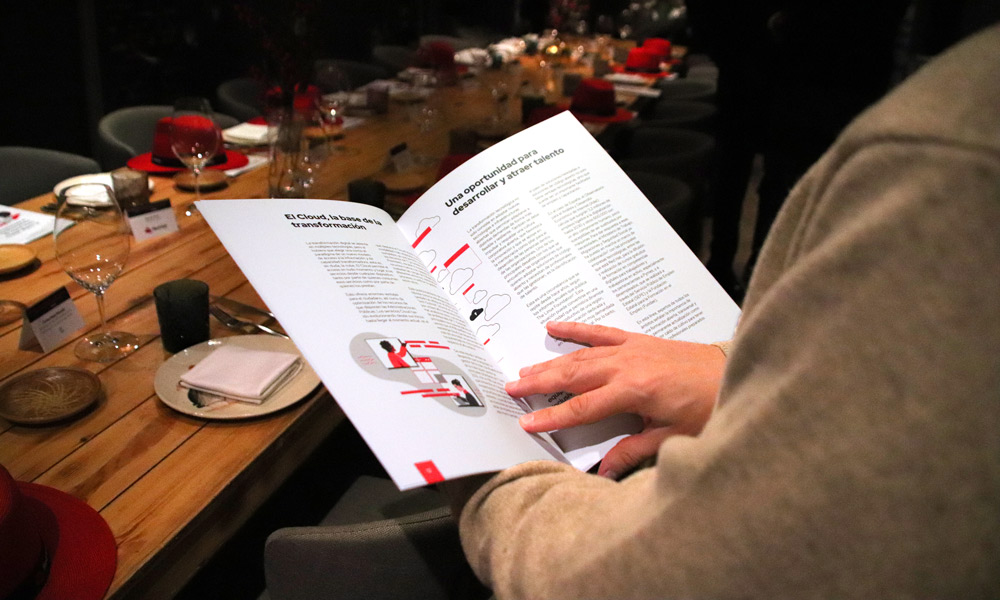
Free software has changed the world. Just think about the enormous amount of open-source developments that surround us and with which we “relate” every day. Some of them, as well-known as Android, are literally in the palm of our hands. Others, such as Kubernetes, although they are only known within the technology industry, play a vital role in sectors such as financial, medical, retail or industrial. Also the public sector.
Town halls, state agencies and companies, Autonomous Communities… more and more public institutions understand and take advantage of the advantages offered by open source software to improve their processes and offer better service to citizens. To get a closer look at the way in which this technology allows them to go further, MCPRO together with Red Hat has celebrated “Open source as an engine of digital transformation in the Public Administration” an executive round table in which, accompanied by representatives of some of the main public administrations in our country, we wanted to discuss the possibilities offered by open source in these organizations, what are the main advantages and how it is being used in cloud or remote environments when modernizing applications.
participated in this conversation Miguel Angel Diaz(Head of Business Development at Red Hat), mario ruiz blanco(Red Hat Sales Manager), Jaime Alvarez de Toledo(Red Hat Public Sector Key Account Manager), Cristina Cid Gil (Deputy Director of Technological Transformation of Correos), Miguel Angel Rodriguez Ramos (Deputy General Director of Systems and Technologies of the Madrid City Council), Enrique Belda Esplugues (Deputy Director General of Information Systems and Communications for Security in the Ministry of the Interior), Angel Luis Sanchez Garcia(CTO of the Madrid Health Service – BE MORE), valentin garcia(Innovation Director of Lantik SA), Oscar Torrero Ladrero(Director of Technology and Systems at Aragonesa de Servicios Telemáticos – AST), Carlos Maza Frechin(Deputy Director of Information Technologies and Communications of the Court of Accounts of Spain), Ana Garcia Ranera (Deputy General Director of Madrid Digital Solutions);,mariano domingo (Director of Infrastructures and Technologies of Aena; Jorge Ordas Alonso (Deputy Director General of Mobility Management and Technology of the General Directorate of Traffic) and Vincent Petruzzella Lacave(Deputy General Director of Exploitation of the Department of the AEAT).
In addition, Gustavo de Porcellinis Mamberto (Commercial Director) participated on behalf of Total Publishing Network. and Rodolfo de Juana de Matthaeis (Director of MCPRO). Many of the conclusions that were reached throughout the event were related throughout the meeting to how the commitment to open source software allows administrations to be more agile in the hiring process.
In this sense, Miguel Ángel Rodríguez Ramos summarized the feelings of many of those present when he highlighted the “accelerator” nature that this type of technology can have: “usually in digital transformation we talk about how important agility is, but When we go to the public sector, one of the big problems we have to be agile is public procurement. In the case of open source software, Being able to start working with an open/community version allows you to start developing a project and make it grow already in a supported way. over time without any kind of break”.
In fact, almost all of them agreed when it came to pointing out the importance of the community that revolves around these developments, both when it comes to launching, as well as to standardize or improve the security of the software. A community that, as Mariano Domingo or Mario Ruiz Blanco point out, is not made up so much of free software enthusiasts, but above all of technology companies for which supporting the Open Source ecosystem is a strategic part of their business.
That this community is the one that allows standardizing technologies and practices is important, because as Ana García Renera points out, “it is this ability to standardize technologies and processes, which allows us to be more agile, since when consensus is reached, we all win. If a good practice is being developed in another administration, it is very easy to transport it”. “In addition,” he points out, “it is easier to find resources from programmers in the market that have expertise in open source software than proprietary technologies. At a time when it is difficult to attract talent, it is a point that I think everyone should value”.
Now, how easy or difficult is it for a public body to bet on open source instead of entrusting its IT management to proprietary software? As Carlos Maza explains, the first thing is to understand that with open source, the paradigm changes: “Open Source software has caused a cultural change in the IT department, which has gone from facing large projects from the beginning, to starting with very large projects.” smaller ones that have evolved. It is a cultural change towards a DevOps philosophy, to the use of containers, to embracing elements such as hybrid cloud…” But also, as Jorge Ordás adds, taking into account that IT departments can encounter resistance, which stems from a lack of training: “many in IT departments are not familiar with concepts like containers or Kubernetes for example. And that is something that completely changes the paradigm.”
Of course, in this change of scenery, what is valued the most is the support offered by companies like Red Hat, even though the use of unsupported software is completely free. But as many expose throughout the day, working with unsupported software it can be a real “suicide”. This is something demonstrated by testimonies such as that of Cristina Gil, when she explains: “the fact that we are pro-open source does not mean that there is no complexity. In fact, the complexity at the moment is getting higher and higher. For example, we cannot find people in the market who are capable of managing our Open Shift environment. We had to contract directly with Red Hat to be able to do it.”
Supported software necessarily implies that, as in the case of proprietary solutions, there are costs that in this case, public administrations have to face. What are those costs and how do they compare? Opinions in this case are somewhat divergent in our meeting. Enrique Belda indicates, for example, that open source, “is not only a more independent system, but as it has a broader community, it is less exposed to cost changes, so it is easier to find people and companies that They will support us.” Particularly interesting was the intervention by Valentín García on cost optimization, since he assured that in his case he had not only managed to save, but that this cost savings that had been taking place since they opted for open source software, “has translated into more innovation, in more resources that we can allocate to R&D”.
Benefits that also flew over the discussion table included “the possibility of modifying the software and introducing changes that adapt to the specific needs of the public sector”; “the power to move from certain more or less direct ‘adjudications’ to more open procedures in which there is greater transparency in the use of resources”; or the very concept of “being able to audit the code”.
Although all the participants recognize these advantages as their own, the majority also emphasize that in their data centers, Open Source solutions continue to coexist with proprietary solutions and that the public administration still has an interesting path to follow for adoption. of open source software is similar to what is being produced in private companies. In part, because it is still necessary, according to several, to “industrialize open source” and in part, because on many occasions the public entity depends on a reality that, as Ana García Ranera comments, “depends to a large extent on who you are with.” married’ in the past, with ‘divorces’ that can have more or less complicated consequences both in the technological field and in the business field…so even if we want to, sometimes the transition is difficult”.
Finally, they all highlighted that largely thanks to open source software, Spain has advanced at tremendous speed in recent years in the field of electronic administration and although some problems persist (“in many cases we should give priority to accessibility”), they assured that “today it would be very difficult to find a procedure that could not be done online in Spain”








